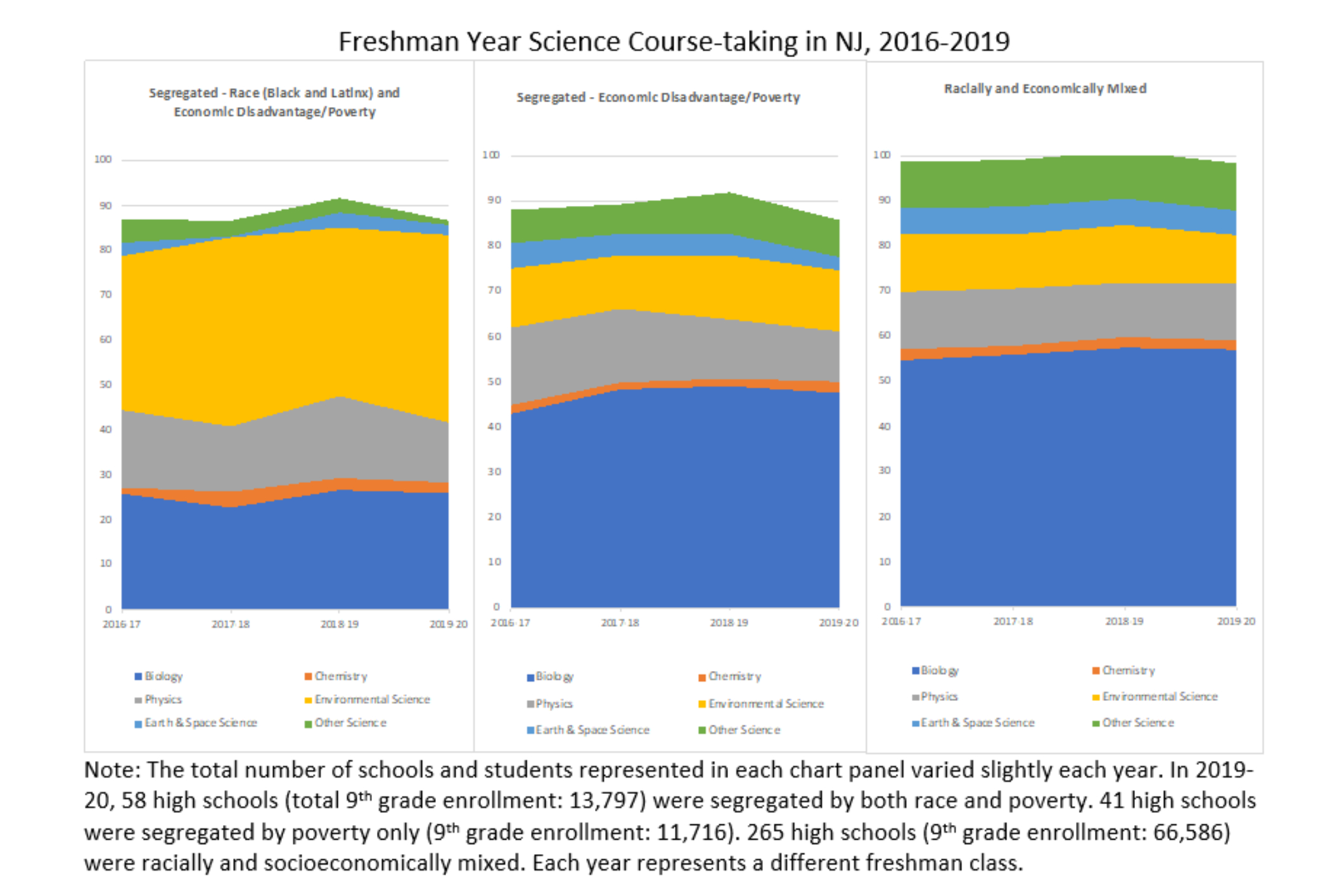Our Work
Publications
Use the filters below to view our work by our various research areas.
April 2025
The COVID-19 pandemic drastically disrupted K–12 education. School staff across the country were faced with the unprecedented task of delivering high-quality instruction amidst a global health crisis. In New Jersey, approximately 15% of K–12 public schools managed to improve proficiency rates in math and/or English language arts (ELA) on the New Jersey Student Learning Assessment […]
December 2023
Work thus far on the NJ Science Course Pathways Study has focused on coding and classifying science course pathways and preliminary descriptive and advanced analyses.
June 2023
High schools’ focus on STEM is a key feature of the ongoing study of the relationship between science course sequences, college enrollment, and pursuit of STEM fields for students in New Jersey.
March 2023
Why does the sequencing of high school science courses matter? This essential question puts an emphasis not only on the combination of science courses taken in high school but also on the sequence of courses taken. As part of our project entitled, “What Science Course Pathways in High School Predict College Enrollment and Pursuing STEM […]
January 2023
By Vandeen A. Campbell, Ph.D. The New Jersey State Policy Lab, in collaboration with the Joseph C. Cornwall Center for Metropolitan Studies, is releasing a report that examines patterns in high school math course-taking across New Jersey [...]
December 2022
With funding from the New Jersey State Policy Lab, the American Education Research Association (AERA), and National Science Foundation (NSF) Research Grant Program, the Joseph C. Cornwall Center for Metropolitan Studies is excited to launch a study of science course-taking pathways in New Jersey’s high schools and identify those which predict college enrollment and pursuing […]
September 2022
By Elisabeth Kim, Ph.D. The most segregated high schools in New Jersey often have the highest suspension rates. For example, this is the case for schools that serve large percentages of students of color (90%+) [...]
July 2022
Freshman Year Science Course-taking in NJ, 2016-2019 Note: The total number of schools and students represented in each chart panel varied slightly each year. In 2019-20, 58 high schools (total 9th grade enrollment: 13,797) were segregated by both race and poverty. 41 high schools were segregated by poverty only (9th grade enrollment: 11,716). 265 high […]
February 2022
It is well established that careers in science, technology, engineering, and mathematics (STEM) fields tend to offer higher wages (Carnevale, Cheah, & Hanson, 2015). Further, individuals who begin engaging in standard and advanced STEM coursework early in high school are more likely to pursue STEM majors in college (Enberg & Wolniak, 2013). NJ’s high school […]
December 2021
Mathematics has long been considered essential to success in secondary and post-secondary education and in a labor market increasingly reliant on 21st century skills (Aughinbaugh, 2012; Kim et al., 2015). Furthermore, an understanding of complex math and problem-solving skills such as algebra is critical to citizenship in a democratic society (Moses & Cobb, 2002; Allen, 2011). […]
November 2021
Background and National Trends The connection between expanding access to high-quality and rigorous coursework and improving postsecondary outcomes is well established within the literature. According to the U.S. Department of Education (2010), a rigorous high school course load can be evidenced by a student’s participation in at least two Advanced Placement (AP) courses. Since its […]
October 2021
Ninth grade is a critical year for getting adolescents on a path to secondary and postsecondary success. For underperforming secondary schools and districts looking to turnaround the trajectory of their freshman cohorts, offering students intense support as they transition from 8th to 9th grade is an investment very likely to yield dramatic change in high […]












